
Anna Wells is about three weeks into a round of all 282 Munros, which she aims to complete within the winter season. If successful she will be only the fourth person that we know of, and the first woman, to do a winter Munro round. This year the astronomical winter runs from 21st December to 20th March, and at the time of writing she has already clocked up 82 summits, having passed the 25% mark in terms of both time and ticks. It's a rate of progress she'll need to maintain for the next couple of months, whatever the weather or her physical condition.
Anna, 34, who works as a risk analyst for a bank, and has had previous careers as both a Doctor and a Mountaineering and Climbing Instructor, has taken three months of unpaid leave for the attempt. She follows in the footsteps of just three previous winter rounds, by Martin Moran (1985), Steve Perry (2006) and Kevin Woods (2020).
To date only Steve Perry completed a round as a continuous walk, an achievement that must still rate as one of the toughest mountain journeys ever undertaken in Britain. Like Moran and Woods, Anna is using a vehicle to get about, and picking off hill circuits as a series of back-to-back day trips. While it adds flexibility and the chance to sleep every night in a warm, dry bed, the car option is not remotely easy, and many of her days have been epic in scale. Operating so far from a base in Inverness, she has been getting in plenty of mileage on the roads, as well as the hills.
UKHillwalking: The winter Munros have been done only thrice before, as far as we know, and never yet by a woman. Are you daunted by this, or do you take inspiration from the challenge?
Anna: I think the fact it's only been done three times before is partly due to the very niche attraction of it, and the fact it's hard for most people to take three months off work/life! From the female perspective, to be honest that just feels like a nice quirk which I only realised retrospectively; I am probably quite lucky because I have never felt at all "different," as a woman in the outdoors. But I recognise I was fortunate to come into mountaineering as a very confident rock climber, and that for many, the barrier is getting started. So I hope that my round may help make women and girls feel represented, and maybe inspire some people.
Have you done all the Munros before, or will some of these hills be new ground to you?
If I count "repeats" of Munros , I have done well over 1000, maybe 2000. But in terms of doing all 282 individual hills on the the list, I've only done less than half. Before I started I was a bit nervous someone might ask me that, and I'd feel like an imposter! I was well aware that Kev had done three full rounds before his winter one. However, from all the days I have now done, I am confident that previous ascents wouldn't have made any difference to my strategy, progress or success. There are so many different ways of linking them up, and conditions (snow, visibility, darkness), make such a big difference. I think it's far more useful to have the ability to plan days and routes strategically with weather, conditions and energy levels.
Besides prior knowledge of the ground itself, are there other strings to your outdoor bow that might stand you in good stead for this challenge?
I found my way into the outdoors via indoor rock climbing, which is an increasingly common route. I spent my teenage years training and competing in youth competitions. After I went to university, I worked at a climbing wall. Through new friends and connections I slowly but steadily diversified my interests and developed my skill set, becoming competent at trad climbing, winter climbing and alpinism. Mostly, I realised that I just utterly loved being in the outdoors doing absolutely anything.
I've done loads of rock climbing in adventurous places like Yosemite, Lofoten, Wadi Rum and the Alps. The first time I went to the Alps I was captivated and realised how much I enjoyed the combination of big endurance days and technical terrain; that sweet spot where the scrambling is challenging enough to keep your mind engaged, but not quite hard enough to rope up. I've climbed 55 of the 4000m peaks of the Alps (there are 82), including lots of big link-ups with valley to valley ascents.
I also set the female FKT for the Cuillin ridge in summer and winter, although my summer record has been beaten. From 2019-2022 I worked full-time as a mountaineering and climbing instructor, largely guiding on the Skye Cuillin and some adventurous rock climbing.
As a keen climber, what motivated you to spend all winter walking instead of climbing, and in particular to give the winter Munro round a go?
I've never consistently enjoyed technical winter climbing because I struggle a lot with the cold, and I find it very uncomfortable belaying for hours. So it didn't feel like I was sacrificing anything there. But I did wonder if I would get two weeks into the challenge and start fantasizing about rock climbing in the Spanish sun or imagining more pleasant ways to spend three months unpaid. However, thus far, my motivation has been sky-high and unwavering! I think I was drawn to the winter round because its very aligned to what I love most - loads of big days out in the mountains and pushing myself. I'm quite a goal orientated person and like "lists" so the challenge really suits me well.
What efforts have you made in terms of reccying and route planning?
Again I feel like a bit of an imposter because my planning was extremely minimal. I had two days off work before I started, and that was the vast majority of my route planning. I didn't reccy anything. I had had a very busy period of work and uni (im studying a masters alongside my job) and all my final hand-ins were three days before the round started. I feel like I erupted from a ball of chaos into day one of the around, and was like "oh my goodness am I actually doing this?!".
How about prior training?
Another embarrassing answer! I felt very fit at the beginning of October, but then had a series of frustrating injuries and accidents. I injured my hip and had to stop running, then got hit by a car and injured my back. A fortnight before my round I was bitten by a dog and on a course of antibiotics, and finally, I got a foot injury which I thought was going to stop me altogether. I avoided weight bearing for ten days before starting and had no idea how it would hold up. It flared up terribly during the first week, but I saw a fantastic physio on New Year's Eve who seems to have solved my problem. So the short answer is, I was not at peak fitness, and knew I would have to start slowly and carefully to build myself up.
Like Martin and Kev you're doing the vehicle-assisted style of round, back to back day trips: what's the thinking behind doing it this way, and what are the pros and cons versus a continuous self-propelled journey as per Steve's winter suffer-fest?
Personally , I think that the self-propelled round that Steve did is a million times harder. In my mind, it's barely even comparable, and I don't think I would be mentally capable of that [join the club - Ed]. Days where I have walked off the hill, soaked, freezing and covered in mud, I have fantasized about getting home for a bath and nice warm bed. I can't even begin to imagine getting into a tent! Plus all the extra weight that you'd have to carry. I am FAR too soft for that.
I think I would also have struggled with Kev's style of basing himself from a van. So far I have mostly been making day trips from my Mum's house in Inverness. Through social media I have had lots of very kind offers for accommodation in other areas, and I will gratefully accept these. Whilst it does add a lot of driving and lengthen the days, for me it's absolutely worthwhile. I think everyone is different and we should play to our strengths.
Cumulatively it all seems pretty gruelling, but have you had any particular setbacks so far?
My foot crisis at the end of week one was my biggest setback. I took one rest day and went into a whirlwind of panic, speaking to multiple physios and tying to figure out what on earth was wrong. I then tried two Munros the following day in almost unbearable pain, before seeing a physio that night who manipulated my foot and quite honestly worked magic.
What's been your biggest, hardest day to date?
My day doing the nine Fannichs. I was so frustrated with myself because I made a lot of silly decisions. I found a nice route suggestion for a big loop from the south, and for some reason didn't really consider other options. During the day, I realised that I could have saved 24km cycling and 10km walking by doing it more efficiently with a car-drop/pickup. The sun was setting whilst I was on the 4th Munro, so that felt a bit overwhelming, and I didn't bring nearly enough food. It was a long haul in the dark, and probably the only day that I haven't fully enjoyed.
How have the weather and ground conditions been treating you? I noticed you'd been singing the praises of snow shoes at one point.
There was loads of snow after Christmas, and after a day wading along the South Glen Shiel Ridge, I invested in a pair of snowshoes. I had done a lot of snowshoeing in the Alps as part of my IML qualification, but saw them more as a novelty rather than a useful tool. But yes, they have been a game changer in soft deep snow. When I did the nine Glenshee Munros, I wore snowshoes for 34.5 our of 35km. I had already decided not to ski on my round, but dare I say it, I think I actually prefer snowshoes for most situations anyway. They are much better for steep neve, crossing snow drifts, crossing heather/rocky bits, and so much less faff. Much lighter to carry up to the snow line. Much of the time it's up-and-down so I would probably just keep skins on and slide with skis anyway. Of course there is the odd descent where I would have loved skis, but on balance, I've grown very fond of my snowshoes.
The ground conditions have varied hugely between deep snow, breakable crusts, and compact neve. There's probably been more snow early on that most winters. Weather has been mixed; three named storms passed through in the first week, but I've now had a lot of blue sky days with low winds, so I am very lucky. That looks set to change though. I have tried to be strategic and make good decisions about where to go based on conditions.
Conditions aside, are there any ranges/areas that you anticipate being especially testing?
Not particularly. There are a few big link-ups with long expanses of "cross country" terrain between peaks which I guess I am less enthused about. Again I will try to be strategic, for example by planning to cross boggy land when it's frozen. I anticipate bad weather being the most testing thing, way more so than any particular hill. Anything is fun when the weather's good, and anything can feel a bit grim when the weather is bad!
The Cuillin is obviously a notable range, but I've spent hundreds of days up there and it feels like home. It would be easy to find a snow-free day and tick it off, but I want to wait and do it in full winter condition, because it feels more authentic (and fun). I have done a full one-day winter traverse before; I might split it into eight south and three north, depending on what opportunities arise.
Is there a particular order that you are doing the hills in, or is it more opportunistic – heading where the weather looks best that day?
In general my plan has been to start north and head south. This was because I liked the idea of basing myself from home in Inverness whilst I got started. But around New Year there was loads of snow and increased avalanche forecast, so I spent three days in the southern Cairngorms where I could snowshoe on low angled slopes. And next week it looks extremely cold so I may dart south again.
Are you intending to schedule in any rest days, or is it a case of just sucking and seeing on that one, depending how you and the weather are faring?
Initially I had thought I would take one scheduled rest day per week, but so far they have presented themselves. I actually took a rest day on day three, which felt like a disaster at the time! I had somehow ended up with four consecutive nights of sub-four-hours of sleep, and the first two days were brutal weather, and I was just utterly exhausted. I've had two other full rest days since then; one was the day of my foot crisis, and the other I did my tax return. So none have been particularly restful! A few times I've woken up and down-scaled my plans for the day. I am trying very hard to listen to my body and not push myself too much, because it's absolutely a marathon not a sprint.
What sort of support have you been getting so far?
First I would mention my mum who I am staying with; she has been phenomenal. She has made me amazing dinners, cakes and packed lunches every single day, not to mention tolerated my mess and chaos, and been unwaveringly supportive. Friends and family have been immensely helpful offering lifts, running errands and offering company.
In terms of gear, Alpkit and DMM have supported me for several years and continue to provide me with excellent kit for this attempt. Bridgedale, Leki and AKU have kindly supported me with socks, poles and boots for the winter Munro round.
- You can follow Anna's progress on Instagram



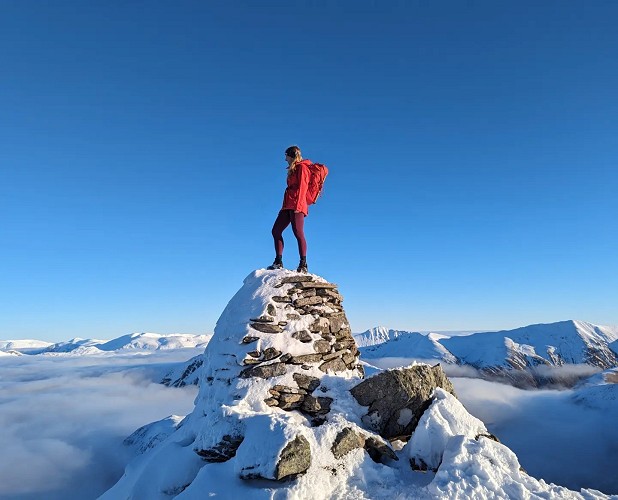
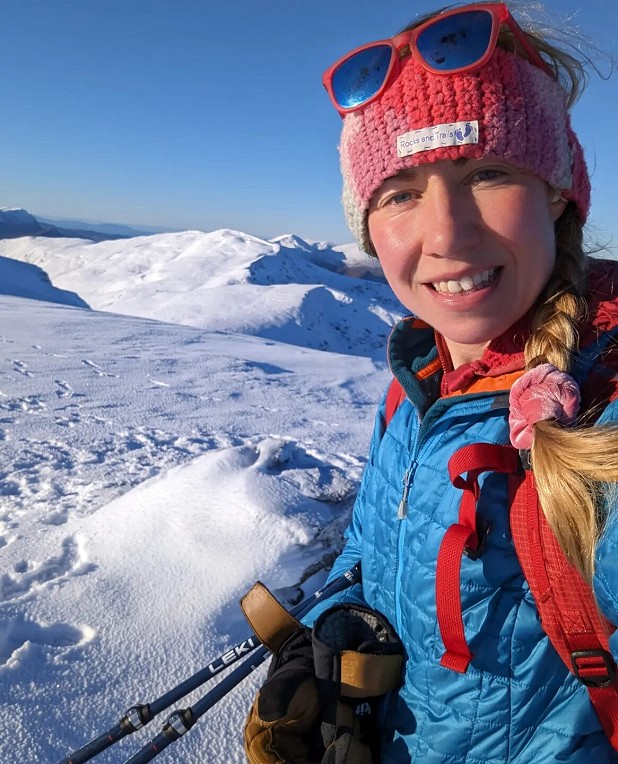
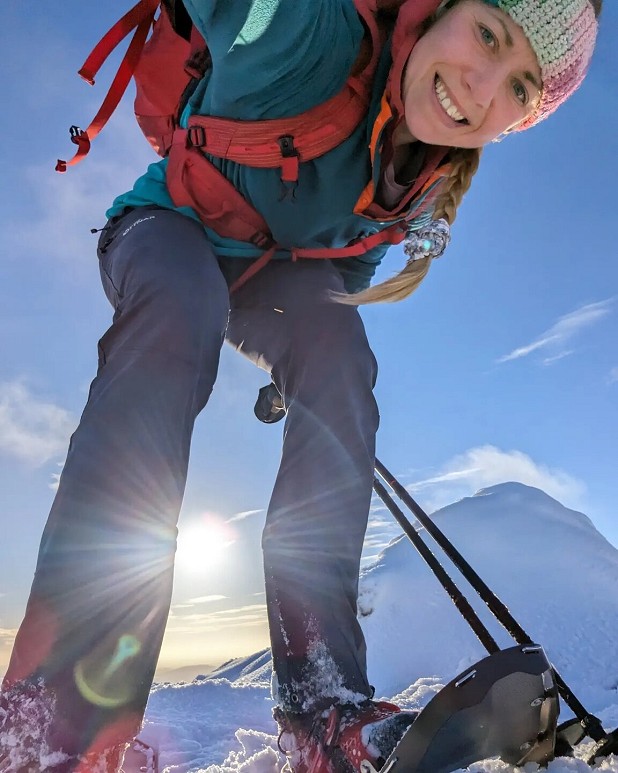
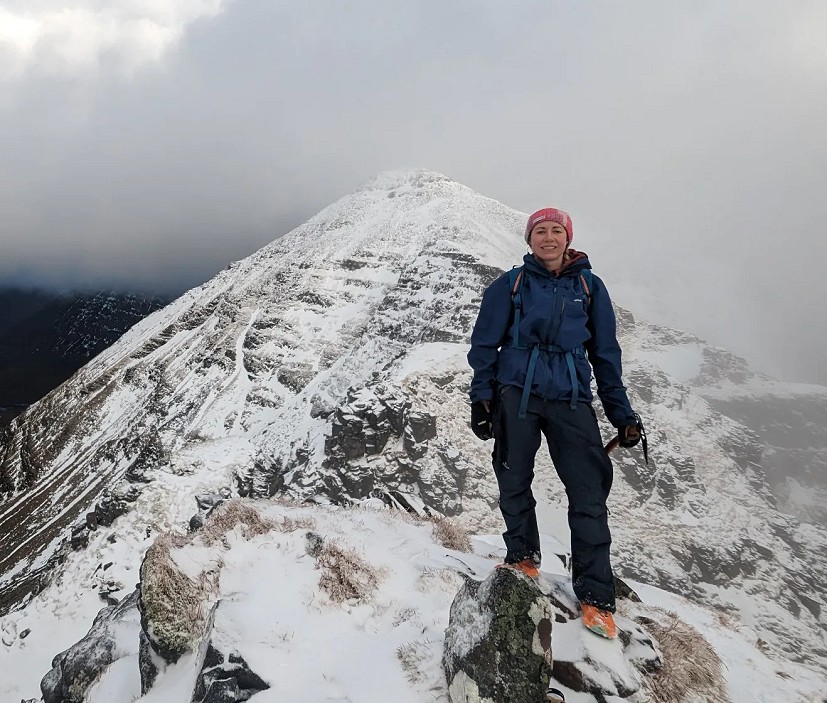
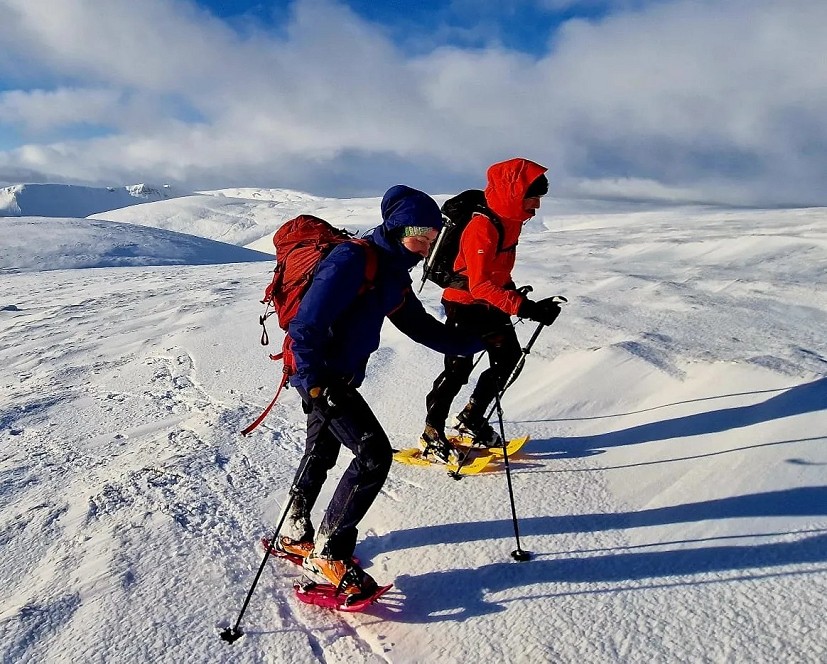
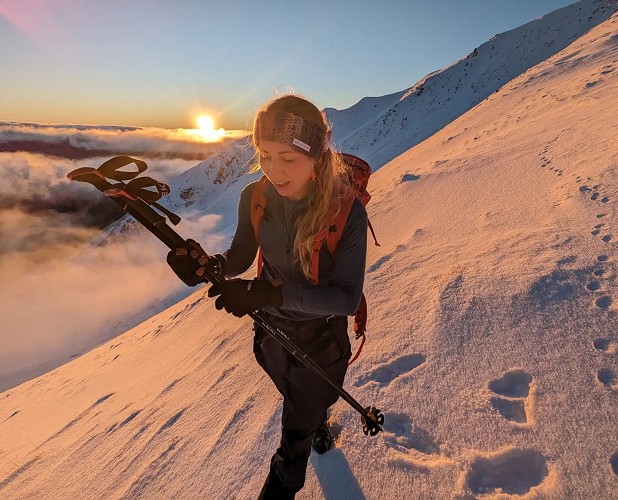






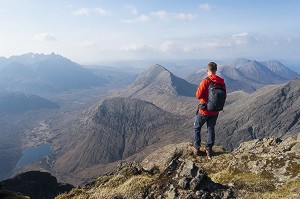
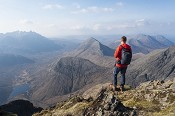
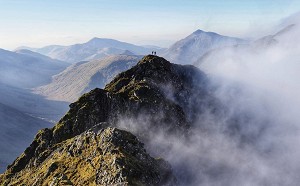
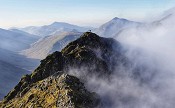
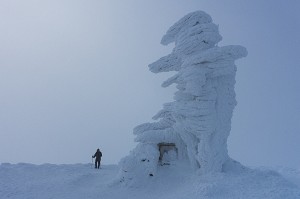
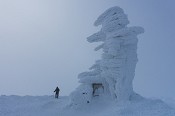
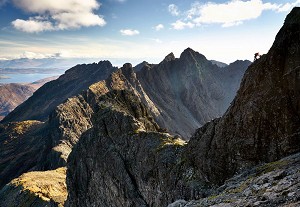

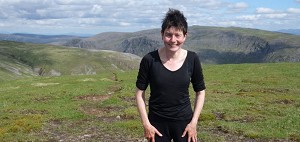

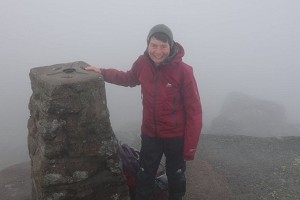
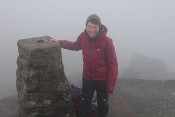


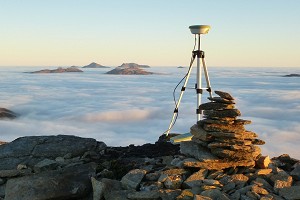
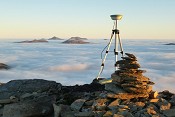
Comments
I'd love to know how many miles.
Did Steve Perry do his continuous round within the official three months from late December to late March? If so, that's really extremely impressive!
That official window does seem slightly contrived to me though - I think most people would probably count Dec/Jan/Feb as the generally the toughest and most wintery months; March has a lot more daylight than December and can be very Spring-like. Obviously some sort of artificial boundaries need to be agreed on though if records are to be kept.
Anyway, I hope Anna manages to keep on track over the gnarlier spell forecast!
Fantastic adventure isn't it!
Will did the Corbetts in winter, not the Munros (similarly gnarly though of course) https://www.ukhillwalking.com/news/2017/05/will_copestake_completes_winter_corbett_round-71070
Good effort, especially given the current chilly weather. However, "I have done well over 1000 [Munros], maybe 2000" is amusingly vague for a first-class maths graduate.
If she has indeed been up 2000 Munros by age 34, what with the doctoring and banking work and the overseas climbing as well, that's arguably even more remarkable than what she's trying to achieve just now.